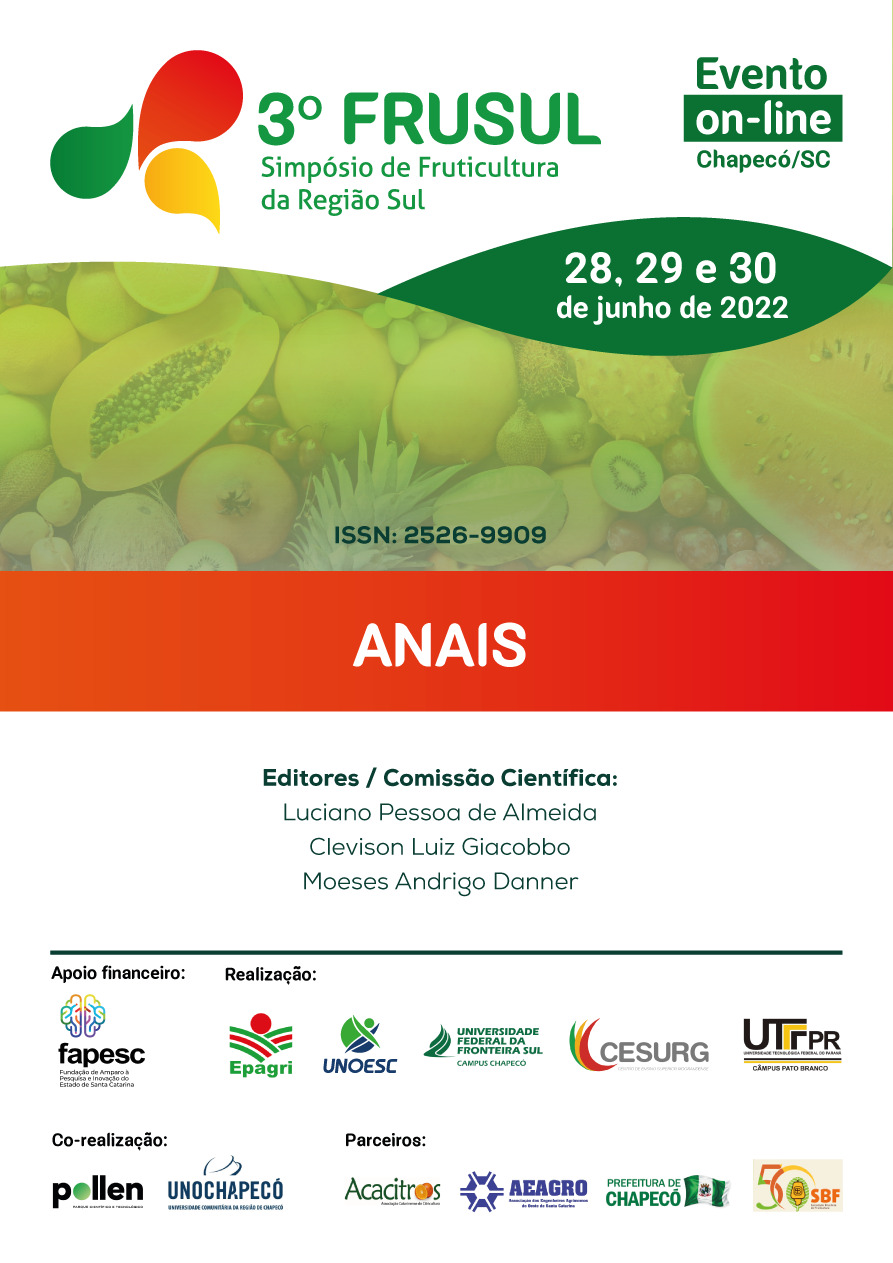Verification of in vitro antioxidant activity in different raspberry cultivars
Resumo
Raspberry is a species of the Rosaceae family, generally the fruits of this family have high nutritional value, a large amount of bioactive compounds and antioxidants, which are important for the proper functioning of the human body. The present study aimed to verify the in vitro antioxidant activity of different raspberry cultivars against healthy human blood cells. The fruits were obtained during the 2020/2021 harvest, in an orchard, located in the experimental area of the Federal University of Fronteira Sul - UFFS, Campus Chapecó-SC. For that, aqueous extracts of three raspberry cultivars were used: Fallgold, Heritage and Autumn Bliss in concentrations of (0, 25, 50, 100, 250, 500, 1000 and 5000 ug/mL) which were submitted to viability analysis cellular, through cytotoxicity by the technique of (MTT) and later evaluation of Oxidative Stress by pro-oxidant markers, through the analysis of nitric oxide (NO), thiobarbituric acid reactive substances (TBARS), by the stress and pro-inflammatory indicator myeloperoxidase (MPO) and exogenous antioxidant marker of vitamin C content for cultivars with higher cytotoxicity. The data obtained were submitted to analysis of variance (ANOVA) and when significant, the Tukey test was applied at 5% probability, using the R Studio software. The results indicate that extracts from the Heritage and Fallgold cultivars showed changes in cell viability causing cell mortality at concentrations above 1000 µg/mL. The cultivar Fallgold presents a quantitative increase of organic nitrites in relation to the control when exposed to doses above 100 µg/mL and that the cultivars Heritage and Fallgold promote the increase of the concentrations of the antioxidant vitamin C. It is concluded that raspberry extracts are safe and can be used for human consumption in the correct concentrations.


